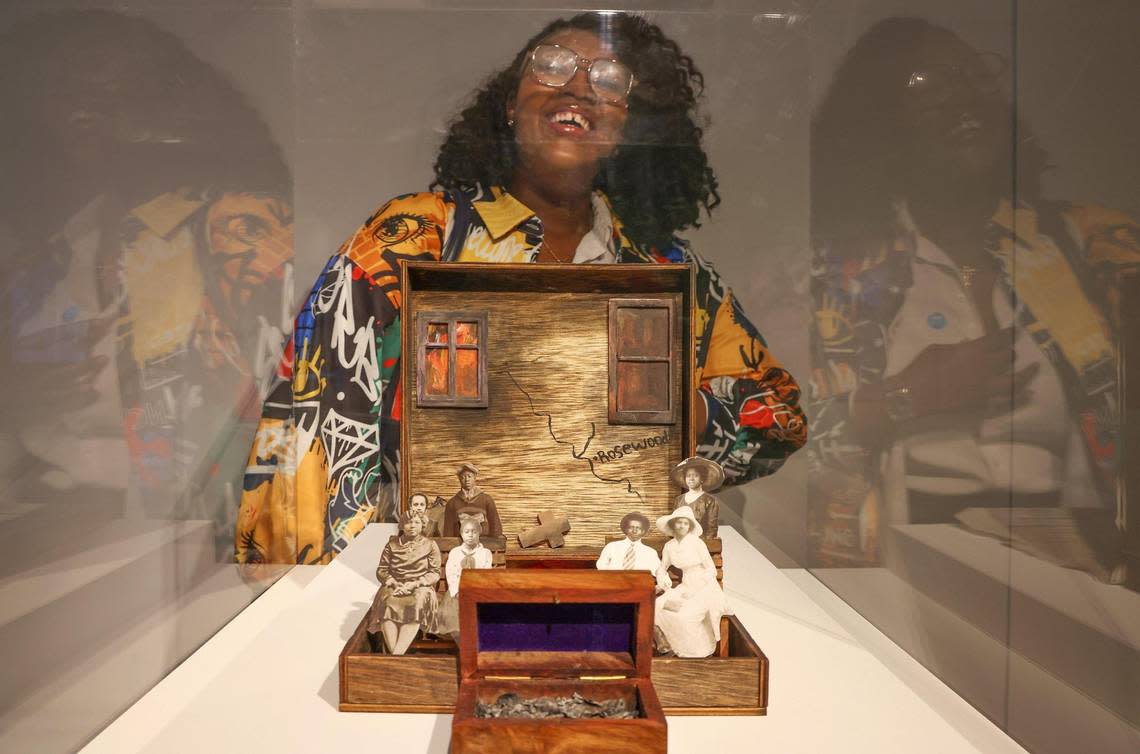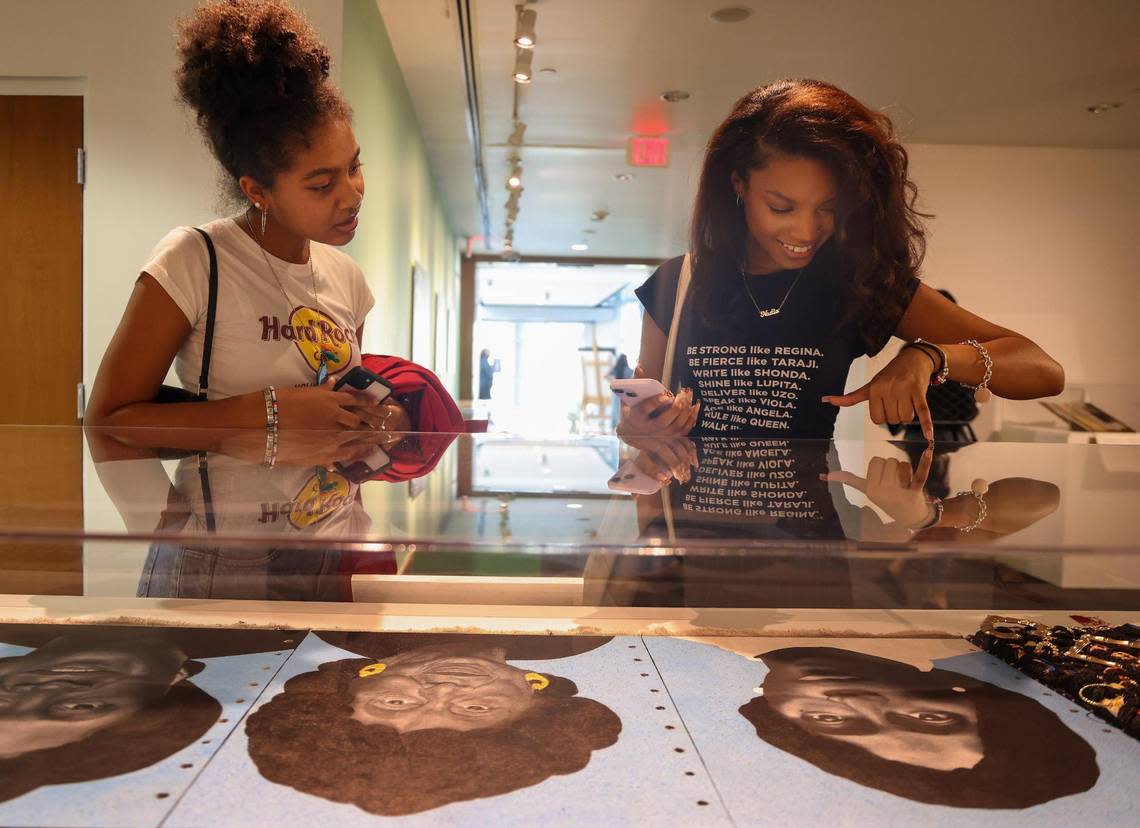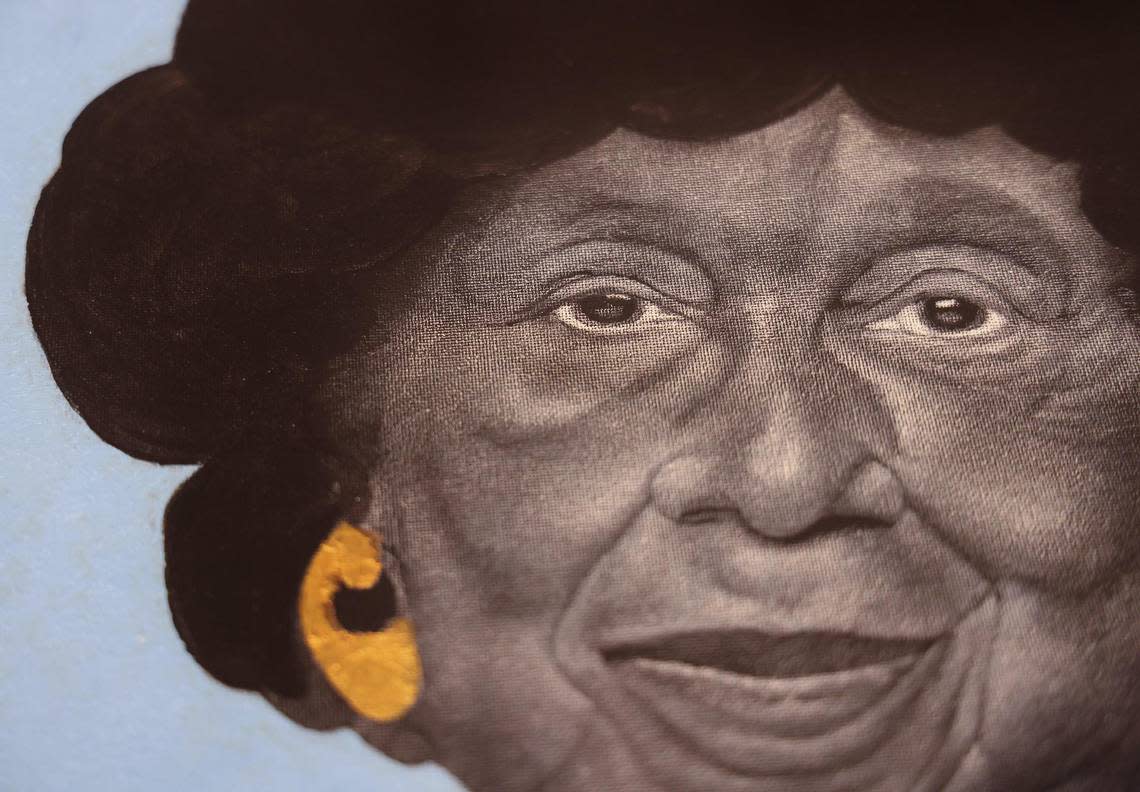‘Everything was intentionally erased.’ Miami museum exhibit recounts Rosewood massacre
Lizzie Robinson Jenkins didn’t want to spend the rest of her life researching Rosewood.
But she had to. Needed to. It was her destiny after all: The false accusation against her uncle sparked the ensuing inferno that would eventually eviscerate the once thriving Black town of Rosewood, Florida, leaving at least eight people dead in 1923.
“I took the story to school with me, to college, to work and it just became a part of who I am today,” the 84-year-old Jenkins, founder of The Real Rosewood Foundation, said to an audience Wednesday at Florida International University at the opening of An Elegy to Rosewood, a new exhibit on display at the Frost Art Museum.
‘This is hard history.’ New exhibit details Black people’s fight for American citizenship
That history, however, isn’t easy to recount, not even for Jenkins, who has spent roughly 30 years uncovering the truth about what really happened to Rosewood. At points, even Jenkins broke down while recounting how a white woman’s false accusation against her uncle, Aaron Carrier, resulted in a mob of more than 500 members of the Ku Klux Klan descending on Rosewood, burning the neighborhood to the ground over the course of a week and even sexually assaulting her aunt Mahulda Brown Carrier, who fled to her grandparent’s home in nearby Archer, Florida. Then and there, the story began to take shape.

“She came in the house, went straight to my mother’s bedroom, fell across the bed and sobbed for days,” Jenkins said. “She told only my mother the story because she was too embarrassed to tell her parents that she had been gang raped by the mob.”
Her mother held on to that story for two decades until finally telling Jenkins, who was charged with keeping the tale alive.
“You will tell the story of Rosewood,’” Jenkins said, recalling what her mother told her. “‘We must keep this history alive.’”
That story would lay the groundwork for An Elegy to Rosewood, which commemorates the massacre’s centennial anniversary. A combination of photos, family heirlooms and art commissioned around the anniversary, the exhibit brings a once forgotten part of Florida history to life.

When a people’s history is “discredited and devalued, those people often become subject to verbal and physical violence,” said Alexandra Cornelius, associate chair of FIU’s department of history, at the opening, calling the exhibit a way “to reclaim this history.”
Heirlooms like a tattered Bible signal the importance of religion to the Rosewood community while glasses speak to the role of continued education despite the harsh realities of living in the South during the Jim Crow era. Though these items bear witness to one of the most horrid periods in American history, they also can be used to plot a better future, said FIU history professor Daniel Royles.
“Rosewood was not a unique event in the history of the United States,” Royles said. He then listed other massacres in places like Tulsa, Oklahoma, Elaine, Arkansas, and Ocoee, Florida, before discussing why this history matters.
“Studying history means seeing the paths that were not taken, the opportunities that were foreclosed, and it means being able to imagine a better present than the one we’re living in. Because if we can imagine a better present, than we can imagine and build a more just future.”
The oral history aspect of Jenkins’ work appealed greatly to Chire Regans, one of the artists commissioned to create a piece for the exhibit. Regans created a book centered around the portraits of Jenkins, her mother, Theresa Brown Robinson, and grandmother, Lizzie Brown, as a way to highlight the importance of Black women to uncovering Rosewood’s history.

“Everything was intentionally erased,” Regans said of Rosewood. “So a lot of what she has is these stories that were passed down through her family.”
During the talk that preceded the exhibit’s opening, the specter of Florida Gov. Ron DeSantis’ recent ban on an AP African-American studies course hung in the air like a thick smog. DeSantis was not mentioned by name yet the entire room knew who Jenkins was addressing when she said: “We got to tell him, ‘He will not ban Black history!’ ”
“I will not be silenced,” Jenkins continued. “We cannot allow our history to go untold.”
An Elegy to Rosewood
Where: Frost Art Museum, 10975 SW 17th St., Miami
When: Jan. 25-April 16
More information: https://frost.fiu.edu
